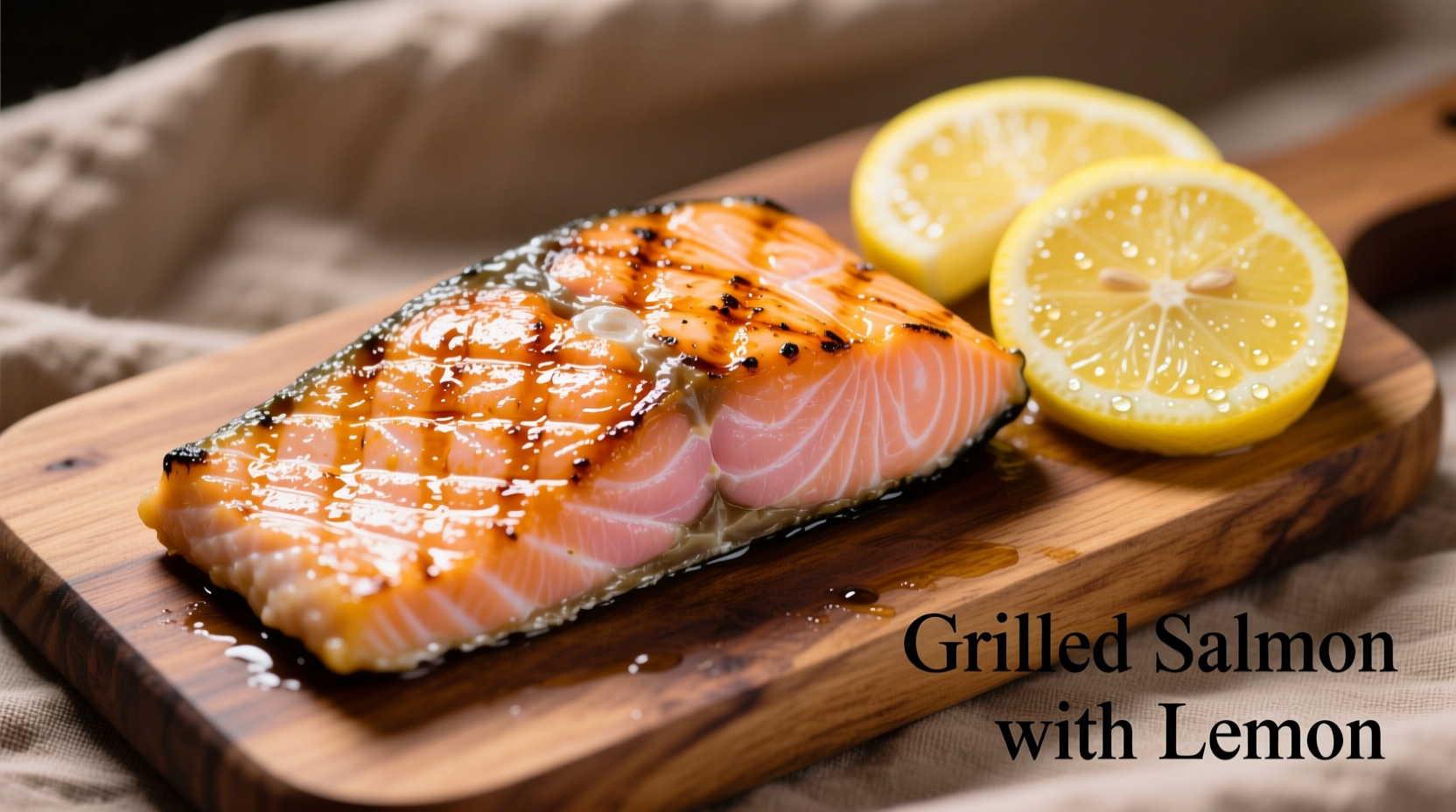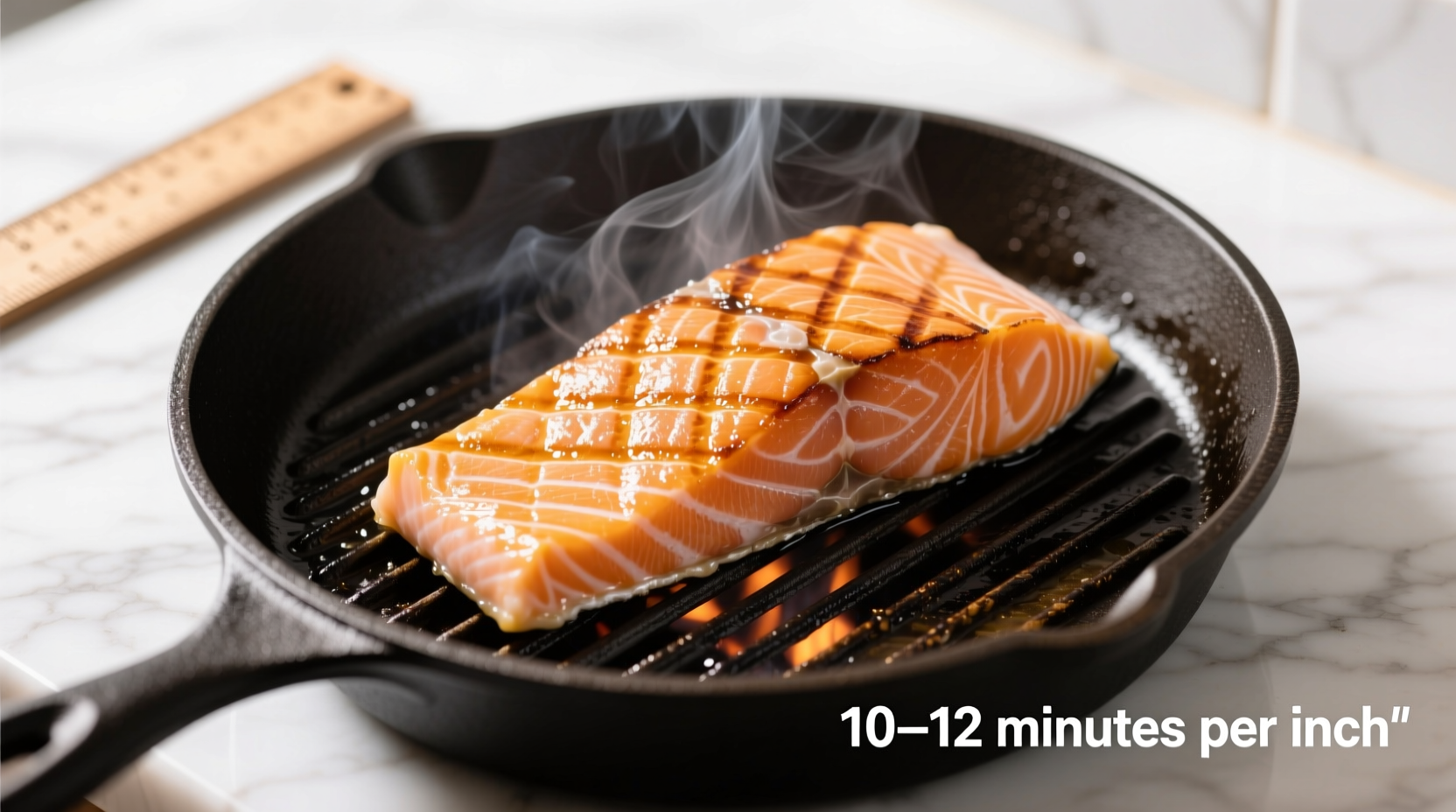Nothing beats the smoky flavor of perfectly grilled salmon, but timing is everything. Get it wrong and you'll end up with dry, overcooked fish or dangerously undercooked protein. After testing hundreds of fillets across different grill types, we've perfected the timing formula that works every time.
Why Proper Salmon Cooking Time Matters
Salmon transitions from raw to overcooked in mere minutes. According to USDA Food Safety and Inspection Service guidelines, fish must reach 145°F internal temperature for safe consumption, but exceeding this by even 5-10 degrees creates dry, tough results. The narrow window between undercooked and overcooked makes precise timing essential for both safety and quality.
| Salmon Thickness | Recommended Grill Time | Internal Temperature |
|---|---|---|
| 1 inch | 6-8 minutes total | 140-145°F |
| 1.5 inches | 9-12 minutes total | 140-145°F |
| 2 inches | 12-16 minutes total | 140-145°F |
Step-by-Step Grilling Process
Pre-Grill Preparation
Remove salmon from refrigerator 15-20 minutes before grilling to bring to near room temperature. Pat fillets completely dry with paper towels - moisture is the enemy of perfect searing. Season generously with salt, pepper, and your preferred herbs. For best results, oil the fish rather than the grill grates.
Grill Setup and Temperature
Preheat your grill to medium-high heat (375-400°F). Create two zones: a direct heat area for searing and an indirect area for finishing. This two-zone approach prevents burning while ensuring thorough cooking. For charcoal grills, bank coals to one side; for gas grills, turn burners to high on one side and low on the other.

Cooking Technique
Place salmon skin-side down (if skin-on) on the direct heat zone. Close the lid and cook for 2-3 minutes to create grill marks and prevent sticking. Flip carefully using a wide spatula and move to the indirect heat zone. Continue cooking with the lid closed, checking internal temperature 2 minutes before expected completion.
How to Know When Salmon Is Done
Don't rely solely on timing - use these visual and physical indicators:
- Color change: Transforms from translucent red to opaque pink throughout
- Flakiness: Gently press with fork - should separate into clean flakes but remain moist
- Internal temperature: 140-145°F measured in thickest part (USDA Food Safety and Inspection Service standard)
- Surface appearance: Slight white protein "bleed" indicates approaching doneness
Common Grilling Challenges and Solutions
Skin Sticking to Grates
Clean and oil grates thoroughly before heating. Ensure grill is properly preheated - cold grates cause sticking. Place fish at a 45-degree angle to grates for better release. Never force stuck fish; let it cook longer until it naturally releases.
Uneven Cooking
Thicker portions cook slower than thinner ends. Position thicker part toward hotter zone. For very uneven fillets, start thicker portion on direct heat, then move entire fillet to indirect zone.
Overcooking During Resting
Remove salmon from grill at 140°F - residual heat will continue cooking it to 145°F during the 5-minute resting period. This prevents the common mistake of overcooking while "checking one last time."
Pro Tips for Restaurant-Quality Results
- Rest before serving: Let grilled salmon rest 5 minutes covered with foil to redistribute juices
- Oil selection: Use high smoke-point oils like avocado or grapeseed for best results
- Wood chip infusion: Add alder or cedar chips to charcoal for authentic Pacific Northwest flavor
- Cold sear method: For skin-on fillets, start skin-side down on cold grill then turn on heat for ultra-crispy skin
Special Considerations for Different Grill Types
While basic timing principles apply universally, different grill types require slight adjustments:
- Gas grills: Most consistent temperature control; ideal for beginners
- Charcoal grills: Higher radiant heat; reduce cooking time by 1-2 minutes
- Smokers: At 225°F, cook 15-20 minutes until 145°F internal temperature
- Plank grilling: Adds 2-3 minutes to cooking time due to indirect heat
Perfect Pairings for Grilled Salmon
Complement your perfectly grilled salmon with these classic combinations:
- Lemon-dill sauce with roasted asparagus
- Mango-avocado salsa with cilantro lime rice
- Garlic-herb compound butter with grilled seasonal vegetables
- Teriyaki glaze with stir-fried bok choy











 浙公网安备
33010002000092号
浙公网安备
33010002000092号 浙B2-20120091-4
浙B2-20120091-4